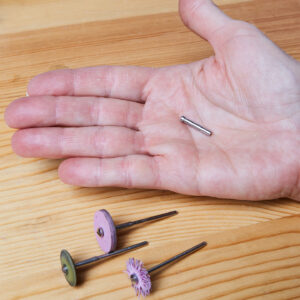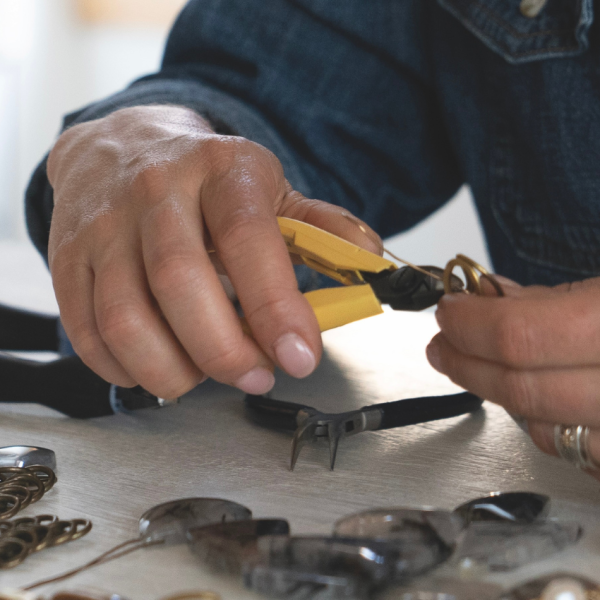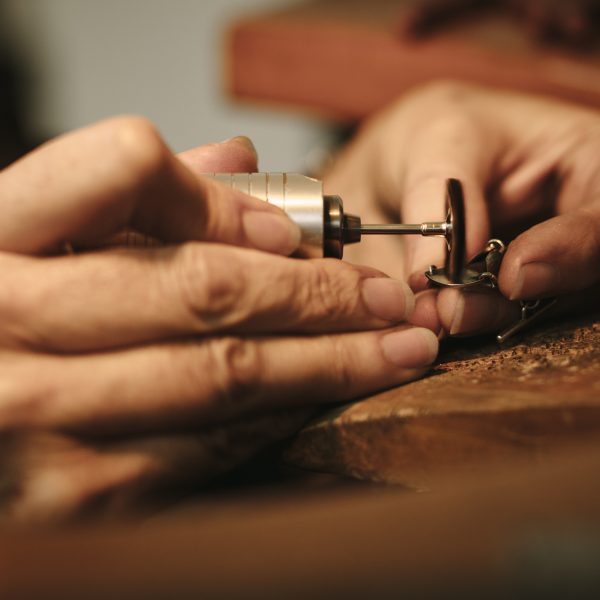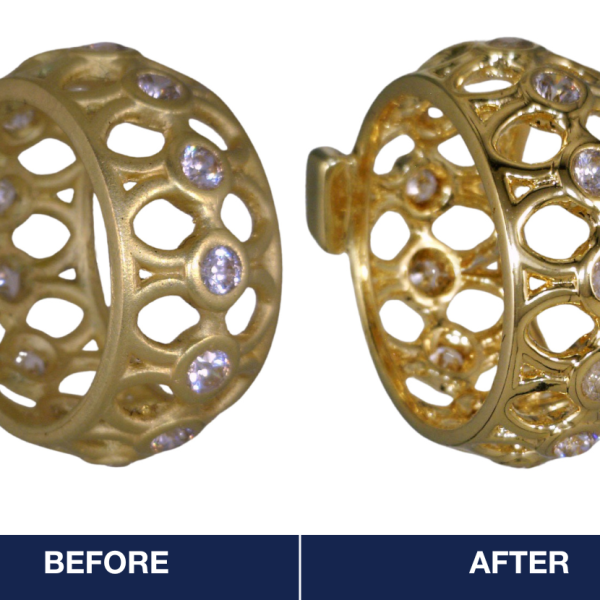Versatility for Micromotors and Rotary Tools
It’s always a good idea to have a plan before starting to shop for motorized rotary tools and their accessories, below are tips for choosing the right tool for your studio.
Equipping a jewelry studio with the right items is no easy task, but it’s true that a motorized rotary-type tool can increase efficiency at the bench. Motorized tools are jewelry studio workhorses, they can help quicken the pace of repetitive tasks like drilling, sanding, and polishing metal. Once you know the basics of rotary tools, hundreds of different attachments will make it possible to accomplish almost any task a jewelry maker could want at a much faster pace than by hand.
Understanding Motorized Rotary Tools
There are many variables to consider with rotary tools, so it’s important to review the basics. Obviously, every motorized tool has a motor that rotates a separate, task-specific attachment of some sort, but each type of rotary machine is unique.
Different Types of Motorized Rotary Tools
- Flexible shaft machines, like Foredom and other brands, consist of a separate pendant (or hanging) motor, a removable handpiece attached to the motor shaft, and a foot-controlled power pedal.
- Micromotor units feature a desktop motor with an on-off switch and speed dial, plus a plug-in handpiece – some units also have an optional foot control pedal.
- Hand-held rotary tools like Dremel feature a bulkier handpiece with a motor contained within it.
Regardless of which motorized tool type you choose, all are used with attachments, and it’s the attachments that help get the jewelry-making done. All attachments are mounted on metal shafts of different diameters called mandrels. Some attachments are permanently fixed to their mandrel, and some attachments can be removed from the mandrel and switched to a different one. Most of the time, compatibility issues start with mandrel size. With the exception of drill bits, the majority of attachments are supplied on 3/32-inch, 5/32-inch, or 1/8-inch mandrels or shafts, and only a handpiece equipped with a Jacob’s chuck will fit all of them.
Every other type of rotary handpiece – like a quick-change or hand-held rotary tool – may not automatically fit a specific attachment and will require an adaptation of some type. That’s why it’s important to know your specific machine or tool, which handpiece model and size you own, and the mandrel size of an attachment before you order.
Collets Can Be Limiting, But There Are Solutions
Most beginners and/or hobbyists start with a hand-held rotary tool for general-purpose drilling, sanding, and polishing. These units, like the popular Dremel brand, require the user to change a removable collet that matches the shaft diameter of the attachment. Removable collets can lead to frustration because many hand-held brands supply only a 1/8-inch collet – common to home repair and woodworking attachments. It is possible to purchase differently-sized collets. It can be time-consuming to discern what size collet is needed and then switch to fit it securely to a variety of different attachments every single time you want to change them.
Micromotor units are popular for stone-setting and high-volume jewelry production work and feature “quick-change” handpieces with built-in collets that will only accept a certain size of attachment mandrel, typically 3/32-inch. A quick-change handpiece requires a simple twist and switch action to change the attachment, and because the most popular jewelry-specific attachments feature 3/32-inch shafts, the quick-change is usually sufficient. If a task requires a smaller or larger attachment mandrel, that quick-change handpiece will require an adapter.
Adapting a Dremel-Style Collet to Fit 3/32-inch Attachments
There are some simple steps you can take to increase the compatibility of your hand-held machine with an assortment of attachments. One adapter tool called a Reducing Collet can solve a majority of problems related to mandrel sizing and makes it possible for nearly any jewelry-specific attachment to fit a Dremel-style hand-held. To convert a 1/8-inch standard collet to fit the 3/32-inch mandrel shaft, just slide a Reducing Collet all the way into the 1/8-inch collet already mounted in the Dremel-style tool and instantly convert it to fit the 3/32-inch attachment with no unscrewing, confusion, or any time wasted.
 For a 1/8-inch micromotor quick-change handpiece, follow the same process to convert it to a 3/32-inch mandrel size – just slide the Reducing Collet all the way into the built-in collet already in the handpiece.
For a 1/8-inch micromotor quick-change handpiece, follow the same process to convert it to a 3/32-inch mandrel size – just slide the Reducing Collet all the way into the built-in collet already in the handpiece.
Several other size options are available in the form of Reducing Collets that can convert any combination of 1/8-inch, 1/16-inch, and 3/32-inch attachments. Your quick-change micromotor (or flex shaft) handpiece or Dremel tool will become much more versatile by adding a full set of Reducing Collets to save both time and effort at the bench. These tiny, time-saving adapters will quickly convert to fit the majority of attachment mandrels available on the market without frustration or confusion.





